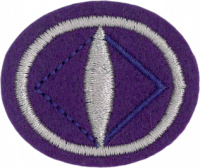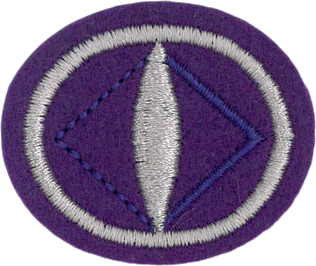Difference between revisions of "AY Honors/Optics/Answer Key/es"
From Pathfinder Wiki
(Created page with "</noinclude> <!-- 6. Explicar por medio de un diagrama por qué una imagen positiva de un lente hace que una imagen se vea invertida. -->") |
|||
| (7 intermediate revisions by 2 users not shown) | |||
| Line 1: | Line 1: | ||
| − | + | {{HonorSubpage}} | |
| − | |||
| − | {{ | ||
| − | |||
| − | |||
| − | |||
| − | |||
| − | |||
| − | |||
| − | |||
| − | }} | ||
| − | |||
| − | |||
| − | |||
| − | |||
<section begin="Body" /> | <section begin="Body" /> | ||
{{ansreq|page={{#titleparts:{{PAGENAME}}|2|1}}|num=1}} | {{ansreq|page={{#titleparts:{{PAGENAME}}|2|1}}|num=1}} | ||
| Line 21: | Line 7: | ||
{{ansreq|page={{#titleparts:{{PAGENAME}}|2|1}}|num=1a}} | {{ansreq|page={{#titleparts:{{PAGENAME}}|2|1}}|num=1a}} | ||
<noinclude></noinclude> | <noinclude></noinclude> | ||
| + | |||
| + | {{clear}} | ||
{{clear}} | {{clear}} | ||
| Line 106: | Line 94: | ||
<!-- 2. Explicar cómo se comporta la luz cuando choca o atraviesa agua, aceite, feldespato y un espejo. --> | <!-- 2. Explicar cómo se comporta la luz cuando choca o atraviesa agua, aceite, feldespato y un espejo. --> | ||
| − | {{clear}} | + | {{clear}} |
| − | {{clear}} | + | {{clear}} |
| − | {{clear}} | + | {{clear}} |
{{clear}} | {{clear}} | ||
| Line 170: | Line 158: | ||
{{ansreq|page={{#titleparts:{{PAGENAME}}|2|1}}|num=7}} | {{ansreq|page={{#titleparts:{{PAGENAME}}|2|1}}|num=7}} | ||
<noinclude></noinclude> | <noinclude></noinclude> | ||
| − | <!-- 7. | + | <!-- 7. Mostrar con diagrama cómo funciona un prisma. Mencionar los ángulos que los colores aparecen y desaparecen. --> |
| − | |||
{{clear}} | {{clear}} | ||
| Line 181: | Line 168: | ||
{{ansreq|page={{#titleparts:{{PAGENAME}}|2|1}}|num=8}} | {{ansreq|page={{#titleparts:{{PAGENAME}}|2|1}}|num=8}} | ||
<noinclude></noinclude> | <noinclude></noinclude> | ||
| − | <!-- 8. | + | <!-- 8. Demostrar lo que ocurre cuando la luz golpea en un vidrio de un solo sentido (opaco o semitransparente). --> |
{{clear}} | {{clear}} | ||
| Line 195: | Line 182: | ||
{{ansreq|page={{#titleparts:{{PAGENAME}}|2|1}}|num=9}} | {{ansreq|page={{#titleparts:{{PAGENAME}}|2|1}}|num=9}} | ||
<noinclude></noinclude> | <noinclude></noinclude> | ||
| − | <!-- 9. | + | <!-- 9. Construir un instrumento óptico usando espejos o lentes, como un periscopio, una diapositiva o proyector de opacos o un simple telescopio. --> |
| − | |||
| − | |||
| − | |||
| − | |||
| − | |||
| − | |||
| − | |||
| − | |||
| − | |||
| − | |||
| − | |||
| − | |||
{{clear}} | {{clear}} | ||
| Line 227: | Line 202: | ||
{{ansreq|page={{#titleparts:{{PAGENAME}}|2|1}}|num=10}} | {{ansreq|page={{#titleparts:{{PAGENAME}}|2|1}}|num=10}} | ||
<noinclude></noinclude> | <noinclude></noinclude> | ||
| − | <!-- 10. | + | <!-- 10. Explicar qué entiende por el término 6x35 y 7x50 tal como se aplica a los prismáticos/binoculares. --> |
| − | |||
| − | |||
{{clear}} | {{clear}} | ||
| Line 247: | Line 220: | ||
{{ansreq|page={{#titleparts:{{PAGENAME}}|2|1}}|num=11}} | {{ansreq|page={{#titleparts:{{PAGENAME}}|2|1}}|num=11}} | ||
<noinclude></noinclude> | <noinclude></noinclude> | ||
| − | <!-- 11. | + | <!-- 11. Definir el término «f/parada», tal como se utiliza en relación con las cámaras. ¿Qué significa que un lente es rápido o lento? Un F/8.5 es un lente más rápido o más lento que un lente f /8? --> |
{{clear}} | {{clear}} | ||
| Line 267: | Line 240: | ||
<noinclude></noinclude> | <noinclude></noinclude> | ||
==Referencias== | ==Referencias== | ||
| − | |||
<noinclude></noinclude> | <noinclude></noinclude> | ||
| − | + | {{CloseHonorPage}} | |
Latest revision as of 00:48, 26 July 2022
1
Definir y/o dibujar un diagrama de lo siguiente:
1a
Longitud focal
1b
Lente positivo
1c
Lente negativo
1d
Dos tipos de distorsión
1e
Color longitudinal
1f
Color lateral
1g
Aberración esférica
1h
Lente acromática
1i
Refracción de la luz
2
Explicar cómo se comporta la luz cuando choca o atraviesa agua, aceite, feldespato y un espejo.
3
Nombrar y dibujar diagramas de tres tipos de lentes positivas y tres de lentes negativos.
4
¿Cuál debe ser la mínima distancia de la fuente de luz de un lente cuando se prueba la longitud focal?
5
Encontrar la longitud focal de al menos cuatro lentes, uno debe ser una lente negativa.
6
Explicar por medio de un diagrama por qué una imagen positiva de un lente hace que una imagen se vea invertida.
7
Mostrar con diagrama cómo funciona un prisma. Mencionar los ángulos que los colores aparecen y desaparecen.
8
Demostrar lo que ocurre cuando la luz golpea en un vidrio de un solo sentido (opaco o semitransparente).
9
Construir un instrumento óptico usando espejos o lentes, como un periscopio, una diapositiva o proyector de opacos o un simple telescopio.
10
Explicar qué entiende por el término 6x35 y 7x50 tal como se aplica a los prismáticos/binoculares.
11
Definir el término «f/parada», tal como se utiliza en relación con las cámaras. ¿Qué significa que un lente es rápido o lento? Un F/8.5 es un lente más rápido o más lento que un lente f /8?


